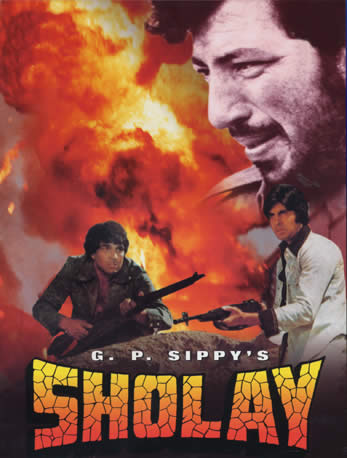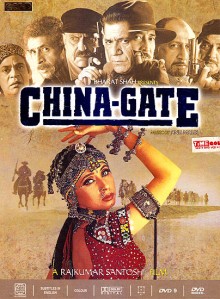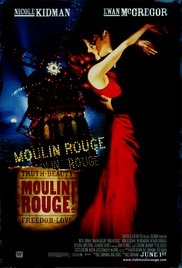I started the blog for the same reason most people do, I guess: to give myself an excuse to write, frequently and quickly. But now that I have had time to write about any one of laundry list ideas I have accumulated, I realize that I cannot. Sometimes, I just care too much about it that it requires a lot of research and contemplation or sometimes I think for so long that I feel a blog post won’t do it justice. So, to finally end this block I decided to write about something totally insignificant, mediocre and not at all something that I should be invested in: Storks (2016).
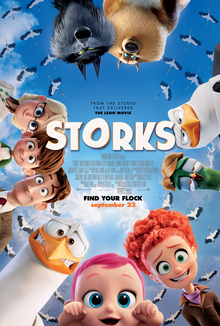
Recently, I was hanging out with one of my friends and she remembered watching trailer of this animated movie which she thought was really funny and asked me if I would care to join her in watching it, you know, instead on researching and/or writing about the ideas I care so deeply about. The movie was Storks and it was okay. Less than okay, even. It is funny in places but does not work as a whole but still it was interesting as throughout the movie I was asking myself out loud, “What the fuck is this movie?” Now, my friend probably thought that I was happily surprised at the antics in the movie but my question was raised in all seriousness: what was this trying to be?
Storks deliver babies — or at least they used to. Now, they deliver packages for a global internet retail giant. Junior (Andy Samberg), the company’s top delivery stork, lands in hot water when the Baby Factory produces an adorable but wholly unauthorized girl. Desperate to deliver this bundle of trouble, Junior and his friend Tulip (Katie Crown), the only human on Stork Mountain, race against time to make their first baby drop before the boss (Kelsey Grammer) finds out.
Even if Storks was forgettable, I find it interesting to try to find its place among the contemporary big budget Hollywood animated movies, firstly, because it is formulaic yet super weird, secondly, because it is the second original property out of Warner Animation Group who gave us The Lego Movie. And allow me to puke up a little animation history lesson in order to tell you why that is important.
Historical detour
If you, like me, grew up watching Looney Tunes shorts then you were passive witnesses to the animation behemoth Warner Bros. once was. Personally, I loved the Looney Tunes because the roster had more personality than the Disney’s gallery of M. Mouse, D. Duck et. al. and I preferred the slapstick of Bugs and gang to Tom & Jerry, if only because all grown-ups luhved the Hanna-Barbera duo (fuck you, dad. Tweety & Sylvester are just better, okay?) Warner Bros. gave serious competitions to Disney in the business of making shorts, but did not transition to feature films, leaving the animation on the big-screen solely to Disney.
Flash-forward to the mid-90s: Pixar has arrived. Disney renaissance is ending. Katzenberg is departing and about to form Dreamworks Animation. The era of 3D CGI animation, that began then, will delineate the business practices of producing animated features for more than a decade. Most of early 2000s went by in dueling between Pixar and Dreamworks. But, another thing that changed in these years is how studios started treating sequels. You see, Disney’s practice was to make low-budget sequels and prequels for straight-to-video release, but then Toy Story 2 and Shrek 2 changed the game. (Side note: Disney, who distributed Pixar movies at the time, wanted Toy Story 2 to me made for straight-to-video.) Now, franchises were turning out to be more and more rewarding, even if the follow-ups were bad: All Shrek sequels and even Puss in Boots each have grossed more than Shrek, well, some of it can be due inflation but still. The franchise fever was rising in all Hollywood but at an unchecked rate in the animation. I speculate because parents were buying (or forced to buy) tickets not based the quality of the movie but the familiarity and the marketing of the movies.
Pre-90s, Disney used to market movies based a Disney image: fairy tale adaptations with good morals, a safe choice. Early Dreamworks movie made movies with an anti-Disney formula with a kitsch pop culture aesthetic and jokes for adults so that parents won’t get bored when in theatres because of their 6 year olds. Pixar had its own thing going which defies simple explanation but is easily recognizable with a projected creative integrity. But every once in a while, Dreamworks or any other smaller studios will hit gold with a franchise which they will keep spamming: Shrek, Ice Age, Madagascar, Kung Fu Panda… And. The. Fucking. Worst… Despicable Me. Pixar for the most part only produced sequels only if they served their creative goals, yet comprised itself with Cars 2 and Monsters University. Don’t get me wrong not all of the movies in the series are bad but mostly they are downhill rides running on the potential energy of the first one and prevented studios from making newer original properties.
What does that have to do Warner Bros? In 2013, the company formed a “think tank” of screenwriters inspired by Pixar called Warner Animation Group to compete with the bigger animation studios. Essentially, Warner Bros. formed a mutually consulting “brain trust” of writers whose stories the company would produce with the animation outsourced to other companies.
And then in 2014, they released Phil Lord and Christopher Miller’s The Lego Movie and it was fucking brilliant!
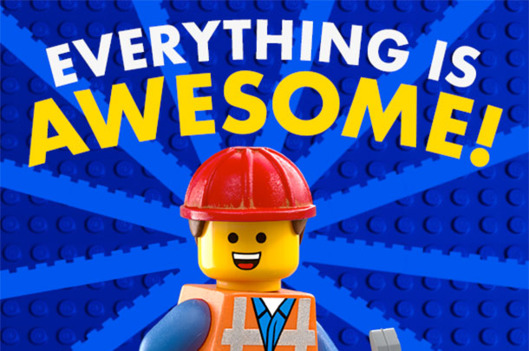
As a movie it was so fresh, superficially in the style, but more substantially in the writing. Like… aaaaaa…. eeeeEEEEP. Even after four years, I can only speechlessly squeal at the memory of the writing in The Lego Movie. If I can find the words someday, it will be a blog post in and of itself, but I have to touch on one thing. On a meta-level, it was a critique of homogenization of popular culture and formulaic storytelling in media among many many other things. Having access to hundreds of established franchise characters from Gandalf to Superman, they still chose to tell a story of Emmett, a blank slate and harked back to a child-like way of storytelling. Like the villain is called fucking Lord Business, if that is not a jab at studio execs, then I don’t know what is.
Moving on from my gushing over TLM, what happened after the movie? Umm, they made two spin-offs The Lego Batman Movie and The Lego Ninjago Movie in 2017, with a sequel and another spin-off in the pipeline. *sobs* What did I expect from a movie based on a toy brand? Of course, they are gonna mass produce movies in the same style before the brand loses steam and forget about the writing.
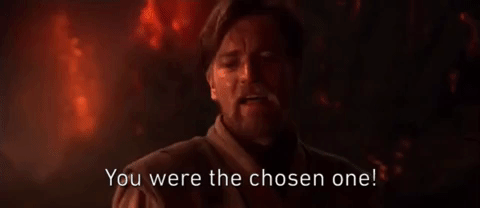
Which brings us to today in 2018. Out of the seven animated features from big studios with decent marketing and wide theatrical release, only two are original (non-sequel/adaptations): the first is Wes Anderson’s Isle of Dogs and Smallfoot. 2019 is gonna be even worse with Everest by Dreamworks and Spies in Disguise by Blue Sky Studios as the only original properties in the pipeline. Guess who is producing Smallfoot? Warner Bros.
Only Pixar has assured that there are no plans for any sequels after Toy Story 4, all the other studios are gonna spam their franchises. So, it is important to examine if there is a niche or identity that WAG can occupy and Storks can maybe tell us how they are trying to do it. And Storks is trying to do is everything.
What The Formula!
There are a quite a lot of formulaic trends in the Hollywood animated fare and Storks uses every single one when it is not directly ripping off previous films. I don’t want to be verbose about this but I feel people who rant about the repetitiveness of animation, fail to see that they did not mind these elements in movies they loved. Storks never fully commits to any of these, so it is kind of just meh.
- The buddy situation: Toy Story and Shrek, in addition to the business practices, also defined the first ingredient of cartoon features which has been the staple for two decades now: put two opposite misfits on a journey together which in the end brings them together and learn values that they were missing in themselves. Now, volume of this device can be adjusted but is always there. And, I didn’t mind it, I mean it just works. It was either this or the Disney fairy tales with a princess finding her love. But, it seems like they are running out of ideas for whackier pairings much like what happened to the buddy cop genre… like an orphan and a stork, seriously? Which brings me to the next standard fodder.
- ANIMALS: It started because initially you could animate cute endearing animal characters without hitting the uncanny valley of human characters and kids love animals in their stories since the beginning of time. But even that is done in different ways: animals in a simply animal setting (The Lion King, Bambi), animalistic animal + human characters (Tarzan), intelligent animal + human pairing (Ratatouille), covertly intelligent animals (The Secret Life of Pets) and anthropomorphic animals (Chicken Little, Zootopia). Storks is to surreal to be just one, I can’t think of any movie with anthropomorphic animal paired with a human except Mr. Peabody and Sherman and even then Mr. Peabody was an anomaly in that world. Here, Junior is one of many business employees and outranks Tulip, but then again you have carnivorous wolves who can form submarines. Is that parrot wearing a toupee? If Hunter is wearing a suit, is Junior naked?
- The whole storks delivering babies thing: For some reason, it is widely used trope/myth in children’s stories, like a standardized lie to answer, “Where do babies come from?” I think it is fun (yes, I said fun. Yes, I know I am a nerd) to think about how perhaps the biggest sources of this idea comes from Hans Christian Andersen, you know, the writer on which Disney capitalized on for decades and still does (Frozen). His original story eponymous to our movie, pretty fucking dark, just shy of a dead baby joke. So, in a way, WAG is pulling a fast one on us by subverting this trope, which Warner already did in the the 70s. Heck, even Pixar did in a short. All in all, subverting fairytale tropes, even if as a non-committal effort, is done plenty of times.
- The lead pair delivering the baby thing: Babies and toddlers are there in a movie for the cuteness factor in movies which did not try to go for the whole Minions shtick (Smurfs, Trolls). Babies are not that popular element, but I will be amiss not to remind that in terms of that element Storks is a precursor/warning omen for The Boss Baby. I already covered the buddy adventure point but add baby on to that and that has been done, not once but twice. First in Monsters, Inc., and then in Ice Age (I bet you forgot about that one what with the franchise turning dumb and frankly amnesiac). And the parallels with Monsters Inc. go deeper:
- Cornerstore.com *ahem Monsters Incorporated* (more on this later)
- The whole avoid-the-baby-because-of-cooties/cuties and trying to hide the baby through awkward lying
- Junior/Sulley are both valuable employees who are breaking company records but this accident can tarnish their career
- The emotional stances over Diamond Destiny/Boo are reversed with Tulip more like Sulley and Junior showing the same apprehensiveness of Mike
- Other character correspondences: Pigeon Toady/Randall, Hunter/Waternoose, and Jasper/Roz
- Final business model change
And in Ice Age, they even had the carnivore eventually growing a liking to our baby and saving him on important occasions (*DoTA announcer voice* Roshan has fallen!).
All of the material that comes from dealing with the baby in these two flicks is used in a manner such that it strengthens the emotional arc of the movies and just the overall narrative satisfaction, but Storks feels compelled to shoehorn in the Gardner family scenes (because they can’t the stakes of the odyssey compelling without endearing the family), the super-coordinated wolf pack, penguin fights, and Tulip’s family subplot.
The weirdest element of the lot was the corporatization of storks which is done in such an inept manner that it forced me to think hard about it and then some.
Modernity and modern animation
Walt Disney positioned his company as a moral standard of the American family in an as inoffensive manner as possible, so the early Disney movies dealt solely with classical moral themes like inner beauty which are timeless. As times changed, in mid-90s, they tried discussing colonialism, gender politics and bigotry with Pocahontas, Mulan and The Hunchback of Notre, but not all of it stuck.
Then came Pixar and opened the doors wide open for stories set in contemporary times, and with it topics of modernity such as mass media nostalgia (Toy Story series), urban/rural divide (Cars), environmentalism (Wall-E) and elder neglect/gentrification (Up). Now, these examples these themes are in the background but then there is The Incredibles, which asked what it meant to be a “normal” nuclear family. With concerns like unemployment, adultery, mid-life crisis and much more, it was the first grown-up movie which worked very well as a kids’ movie.
Even more relevant to this discussion, Pixar did something with Monsters Inc. which to this fucks me up. They took an irrational idea, “monsters come to scare children”, and gave it a capitalist cause. So much of the narrative tissue of the movie uses blue-collar workplace notions of targets quotas, trainees, safety regulations and daily reports. But as I interpret it, the movie just uses corporate setting for coding purposes and not for commentary, at least not so much on the work environment. The way I see it, the movie was talking saying: why exploit kids by scaring them, you know with your Disney villains and macabre cautionary tales, when you can flourish as a business by making them laugh? (Huh, I am sure there is meta-commentary there somewhere, I don’t know. BTW, Disney gave up and bought Pixar, five years later)
DreamWorks ditched sincerity and went with the ironic prodding of the subject matter. Shrek ridicules Disney amusement parks and then there is, well, The Bee Movie. They don’t really go anywhere with it.
After a few years of quiet, there came The Lego Movie (what you thought I was done talking about it). I already talked about the media capitalism ties, but there was another thread in the movie where dad’s (Will Ferrell) work and business-like is explicitly pitted against the quality of his relation with his son. Lord Business may have been a stand-in for studio execs for me, but for Finn and most kids watching it, he reminded them of their workaholic dads. Then, the work-family strain was played up again in Inside Out, a year later but I expected that from Pixar. On the other side, an established studio was stepping into new waters and in its first outing it went there. So, what do they say in their sophomore release?
First, let me try to sift through the whole stork business thing. If there is any serious critique of effects of corporate life or capitalist interests, it is lost on me because of poor world-building. It is nothing more than just a light jab at Amazon, I guess. Quick joke: Why does Jeff Bezos’ salary as CEO is 59 times the median Amazon employee salary even though his shares make him the richest man on Earth? POWER MOVE. 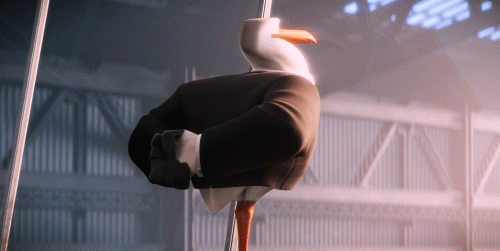
But why should we million dollar studios criticize the effects of capitalism, when they have tickets to sell? Why would they ridicule McDonald’s when there are Happy Meal deals signed? Except the familial values which is the bedrock of animated movies for kids, is at odds with the American quest for money.
But the whole stopping the baby delivery thing when combined with the Gardner family conflict of work/family investment, the message given is loud and clear: work life keeps American adults from having a joyful family-life and even keeps them from having babies altogether. Yeah, your stupid cartoon movie had a baby making googly eyes at all the reluctant parents and asking them to have another baby. It is right there in the premise: babies are bad for business, people get attached and do not remain the unattached machine-like labor they are required to be. But then the movie reminds you how raising kids can bring people together and having a loving and accepting family is the only source of happiness. Nate Gardner’s emotional blackmail is played as a gag but is not subtle. Gone are the days of Disney subliminally asking adults to have sex, Warner Bros. are holding a fucking cute baby in front of you and saying, “Say ‘Aww’, bitch!” And even after that it isn’t understood the movie ends in delivery of millions of babies to their families. By the end, I was expecting anti-abortion campaigning.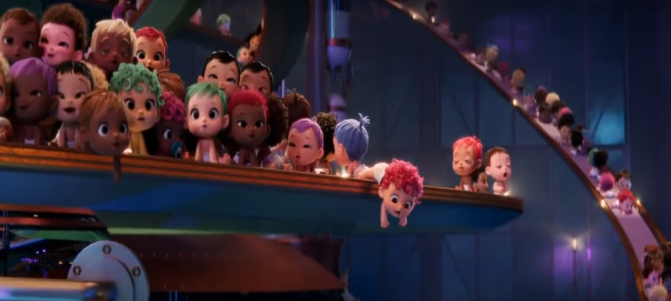
I am not saying I don’t find this is problematic, I am an anti-natalist lol, but I think it is harmless. Anyhow, the focus on having and raising kids might have even caused this movie to be the dud that it was; it made money but not as much as the others. This was just a dumb idea. Of all the elements they could have focused on, they chose to double down on this.
[At this point, I have to acknowledge The Boss Baby, the movie in which they literally put the notions of business and baby together. It talks a lot about a lot of the things I discussed. But, you know what: fuck that movie. It is funny and entertaining but it is too much of a bizarre kid’s acid trip to make sense out of. I don’t care if it is Oscar nominated. Shut up about The Boss Baby or I will have to talk about The Emoji Movie and neither of us want that!]
Here’s the thing: Storks is mess. An entertaining mess. The movie finally brings back the level of slapstick that was native to Warner’s Looney Tunes. Nick Stoller understands comedy; fast-talking grown-up dialogues to the crazy riots of pure hilarious physicality. They are pushing boundaries of whackiness in animated movies, it does not work, but they are pushing it, okay? But, the movie does not have a story to hold your attention, nor a world that is immersive, not even a message that can leave a mark on your mind. It is a chimera of all Pixar/DreamWorks movies that came before it in conception, but in the execution it is just the trailer on steroids.
I am a little disappointed in WAG, but maybe I should not have hyped myself up over one movie, considering that even if the studio is the same it is completely different creative leads. And I should not complain, even if there are an average of 7 animated movies a year, we only need one Pixar and considering that Disney might be entering a second renaissance, it is gonna be alright. But, my complaint is not so much personal, it is about the kids. The kids never decide what they watch, not actively and critically at least, their parents do. And by the looks of it, they don’t care if the movies are crap. The reviewers do not know how to review movies, the opinions are more and more divided on movies like The Storks. And, yeah, The Boss Baby is getting nominated for Oscars.
And as I pointed out these are the trends that have been there for over two decades longer than the Disney renaissance. Disney would have continued raking millions if Pixar did not give the audience the alternative, even if they fatigued. We need something exceptionally novel that can broaden big-budget animated films’ potential. Something revolutionary!
But turns out it is hard to put out something of substance compared to churning out formulaic passable creations, frequently and quickly. Huh. Maybe I should try harder at writing about things I care about rather than talking about The Storks, the microcosm of everything wrong with the animated movie.
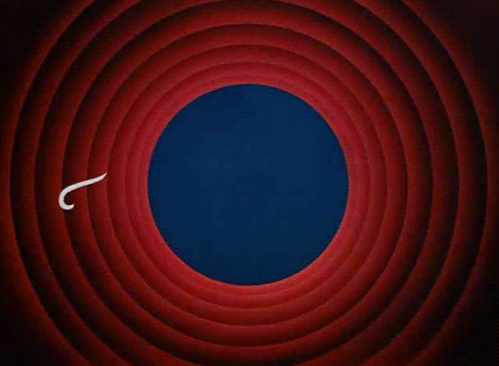





















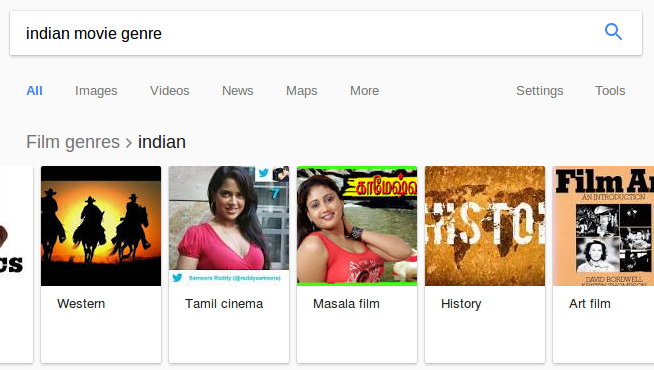
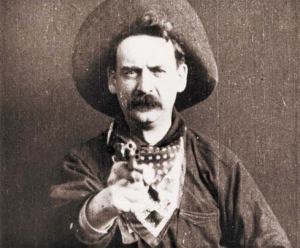 made. But that is not what fascinates me. What blows my mind is the scope of it– the wikipedia page of Western (genre) lists 22 subgenres like classical, sphagetti, churro and curry (what restaurant is this?) — and its influence. Here’s the deal, I have not seen any classical Western as far as I remember. No John Ford, no John Sturges and no Clint Eastwood (except the Gorillaz song). But, I know what a Western is and I have seen a lot of it. Like a lot *deep breath*
made. But that is not what fascinates me. What blows my mind is the scope of it– the wikipedia page of Western (genre) lists 22 subgenres like classical, sphagetti, churro and curry (what restaurant is this?) — and its influence. Here’s the deal, I have not seen any classical Western as far as I remember. No John Ford, no John Sturges and no Clint Eastwood (except the Gorillaz song). But, I know what a Western is and I have seen a lot of it. Like a lot *deep breath*